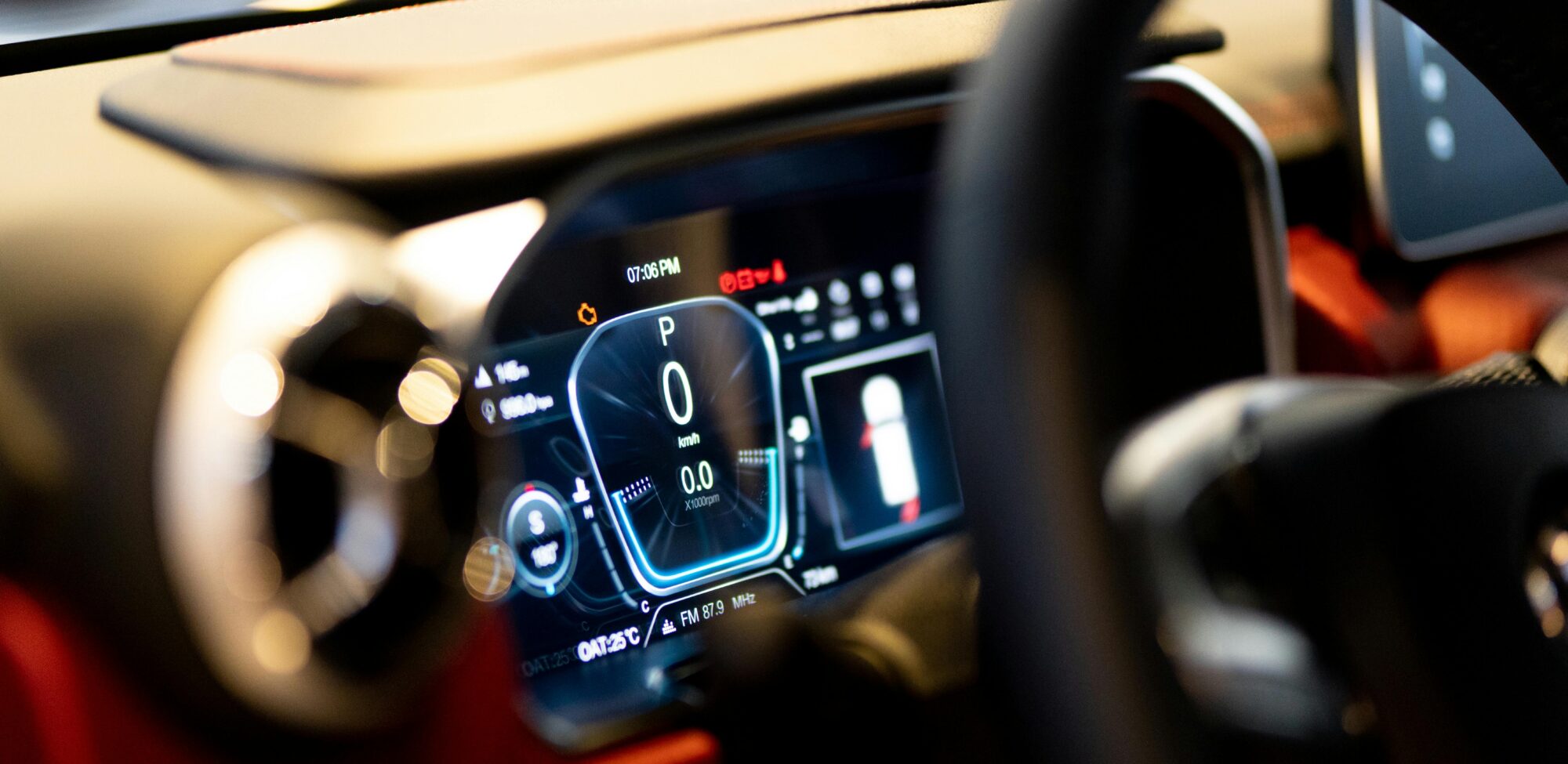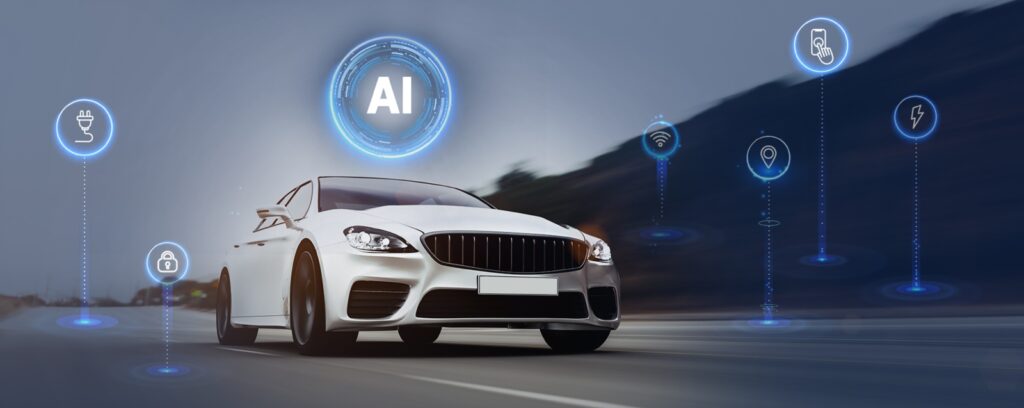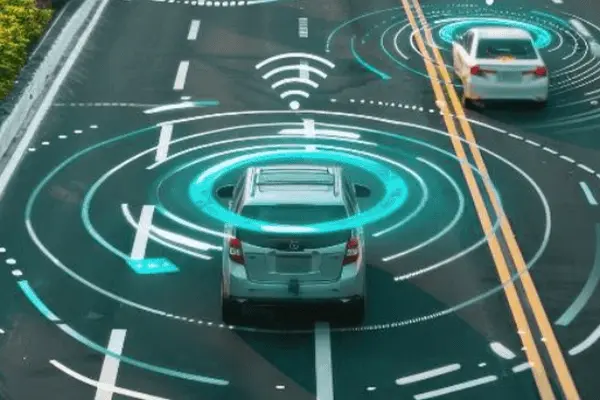
The Role of Artificial Intelligence in the Automotive Industry: From Car Design to Smart Manufacturing
The roar of an engine, the sleek lines of a new model, the freedom of the open road – these hallmarks long defined the automotive industry. Now, a silent, intelligent revolution unfolds beneath the polished chrome. Artificial intelligence in the automotive industry is not just a buzzword. It is the invisible architect reshaping how we conceive, build, and drive vehicles. From initial design sketches to robotic precision on the factory floor and the sophisticated intelligence powering autonomous systems, AI accelerates innovation at an unprecedented pace.
This post explores the multifaceted role of Artificial Intelligence in Automotive Industry. It details AI’s transformative impact, from initial design and manufacturing to the future of autonomous driving and enhanced safety. We uncover how this powerful technology optimizes existing processes and forges entirely new paradigms for mobility.
How AI Is Used in the Automotive Industry ?
AI integrates across the entire automotive value chain. It acts as a catalyst for efficiency, precision, and innovation.

Car Design and Development
Car design is no longer solely a human endeavor, limited by manual iterations. AI in Automotive industry has ushered in an era of intelligent design.
- Generative Design: AI algorithms explore thousands of design possibilities that human designers might miss. Designers set parameters like desired weight, strength, and aerodynamics. AI tools then rapidly generate optimized structures. This accelerates the design process and leads to more efficient, safer vehicles. For instance, General Motors famously uses generative design to create lighter, stronger parts, such as seatbelt brackets. This achieves significant weight reductions while improving performance.
- Simulation and Testing: Before building a single physical prototype, AI-powered simulations predict car performance under various conditions. Virtual crash tests, aerodynamic simulations, and stress analyses run with remarkable accuracy. This greatly reduces the need for costly, time-consuming physical testing. This application of artificial intelligence in vehicles design streamlines development cycles. It also helps bring new models to market faster.
- Predictive Analytics for Material Science: AI analyzes vast datasets of material properties. It recommends the best materials for specific components or even designs new ones. This helps manufacturers identify lighter, more durable, and more sustainable materials. It contributes to both vehicle performance and environmental goals.
Smart Manufacturing and Production (AI in Car Manufacturing)

The factory floor showcases AI in car manufacturing. It transforms traditional assembly lines into smart, interconnected ecosystems.
- Robotics and Automation: Robots have long been a staple in car manufacturing. AI, however, elevates their capabilities. AI-powered robots are more agile, adaptable, and learn from their environment. They perform complex tasks like precision welding, painting, and assembly with unparalleled accuracy and speed. They often collaborate seamlessly with human workers.
- Predictive Maintenance: Downtime on an assembly line costs millions. AI in Automotive industry leverages machine learning algorithms. They analyze real-time sensor data from manufacturing equipment. By detecting anomalies and predicting potential failures, AI enables proactive maintenance. This significantly reduces costly unscheduled stops and optimizes production uptime. According to a report by Deloitte, predictive maintenance can reduce maintenance costs by 5-10% and improve asset availability by 10-20%.
- Quality Control: AI-powered vision systems revolutionize quality inspection. High-resolution cameras with deep learning algorithms detect minuscule defects on paintwork, welds, or components. They do this far more consistently and rapidly than the human eye. This ensures higher quality for every vehicle, minimizing recalls and warranty claims.
- Supply Chain Optimization: AI algorithms analyze market demand, production schedules, and logistics data. They optimize the entire supply chain. This includes forecasting component needs, managing inventory levels, and optimizing shipping routes. This leads to reduced costs and improved efficiency.
In-Vehicle AI (Artificial Intelligence in Vehicles)
Beyond the factory, artificial intelligence in vehicles redefines the driving experience. It makes cars smarter, safer, and more connected.
- Infotainment Systems: AI increasingly powers modern car infotainment systems. Voice assistants recognize natural language commands. This allows drivers to control navigation, music, and climate without removing their hands from the wheel. AI also personalizes the in-car experience. It learns driver preferences for seat positions, climate settings, and entertainment.
- Driver Monitoring Systems (DMS): These systems use cameras and AI. They monitor driver behavior, detecting signs of fatigue, distraction, or inattention. If a driver starts to nod off or look away from the road, the system issues alerts. This helps prevent accidents.
- Navigation and Route Optimization: AI-powered navigation systems offer more than simple turn-by-turn directions. They analyze real-time traffic conditions, road closures, weather patterns, and predictive traffic flow. They suggest the most efficient routes, saving drivers time and fuel.
How Artificial Intelligence Transforms the Car Industry
AI’s pervasive integration is not just an incremental improvement. It is a fundamental transformation. AI drives profound shifts in efficiency, safety, and customer experience across the automotive sector.
Enhanced Efficiency and Cost Reduction
AI’s ability to optimize complex processes directly leads to significant efficiency gains and substantial cost savings. This includes:
- Streamlined Production Processes: Robotic automation and predictive maintenance minimize bottlenecks. AI in car manufacturing maximizes throughput on the assembly line.
- Reduced Waste and Optimized Resource Allocation: AI helps identify inefficiencies in material usage and energy consumption. This leads to more sustainable and cost-effective operations.
- Faster Product Development Cycles: AI accelerates design, simulation, and testing phases. This significantly shortens the time to bring new models from concept to market. Manufacturers respond more quickly to consumer demands and competitive pressures.
Improved Safety (AI Automotive)
Safety has always been paramount in the automotive industry. AI Automotive elevates it to new levels.
- Advanced Driver-Assistance Systems (ADAS): This is AI’s most visible safety application. Features like Adaptive Cruise Control, Lane Keeping Assist, and Automatic Emergency Braking rely heavily on AI. AI interprets sensor data (cameras, radar, lidar) and reacts faster than a human. These systems demonstrably reduce accidents and fatalities. The National Highway Traffic Safety Administration (NHTSA) highlights the significant safety benefits of ADAS features in crash prevention.
- Real-time Hazard Detection: AI systems continuously scan the environment around the vehicle. They identify potential hazards like pedestrians, cyclists, or obstacles. They alert the driver or even take evasive action automatically.
Personalization and Customer Experience
AI allows car manufacturers to move beyond a one-size-fits-all approach. It offers highly personalized experiences.
- Tailored In-Car Experiences: AI learns driver preferences. It automatically adjusts climate control, music playlists, and even seating positions as soon as the driver enters the vehicle.
- Predictive Maintenance Alerts for Individual Vehicles: Beyond the factory, AI monitors individual vehicle health. It proactively alerts owners to potential issues before they become serious. This improves reliability and reduces unexpected breakdowns.
New Business Models
AI’s rise also enables entirely new ways for automotive companies to generate revenue and interact with customers.
- Mobility-as-a-Service (MaaS): AI is a core enabler of MaaS. Traditional car ownership gives way to subscription-based access to transportation. AI optimizes fleet management, vehicle allocation, and routing for ride-sharing and car-sharing services.
- Data Monetization from Connected Cars: Connected cars generate vast amounts of data. AI analytics derive valuable insights from this data. This data is then monetized through partnerships with urban planners, insurance companies, and other service providers. This creates new revenue streams.
How Machine Learning Is Used in Automotive Diagnostics?
Machine learning in automotive industry rapidly transforms vehicle maintenance and repair. It shifts from reactive fixes to proactive, predictive solutions.
Predictive Diagnostics
Predicting vehicle failures before they happen is one of ML’s most impactful applications.
- ML Models Analyze Sensor Data: Modern vehicles have hundreds of sensors. They monitor everything from engine temperature and oil pressure to tire wear and brake pad thickness. Machine learning algorithms continuously analyze this data. By identifying subtle patterns and deviations from normal operating conditions, ML models predict when a component will likely fail.
- Early Warning Systems: These predictive insights trigger early warning alerts for both drivers and service centers. Imagine your car telling you your battery will likely fail in the next two weeks. You can then replace it at your convenience, avoiding unexpected stranding. This proactive approach significantly improves vehicle reliability and customer satisfaction.
Remote Diagnostics and Over-the-Air (OTA) Updates
ML enables a new era of remote vehicle management.
- Identifying Issues Remotely: Dealerships and manufacturers remotely access vehicle data. They run diagnostics and identify issues without the car’s physical presence. This is especially useful for minor software glitches or narrowing down problems before a repair appointment.
- Delivering Software Fixes and Improvements: Over-the-Air (OTA) updates, similar to those on smartphones, deliver software fixes, performance enhancements, and new features directly to the vehicle. This reduces service center visits and keeps vehicles up-to-date. Tesla is a prime example of a company extensively using OTA updates to improve vehicle features and fix issues.
Streamlined Repair Processes
When a repair is needed, ML assists technicians in becoming more efficient.
- ML-Powered Tools Assist Technicians: Diagnostic tools integrated with ML quickly sift through complex diagnostic codes and vehicle data. They pinpoint the root cause of an issue. They cross-reference symptoms with vast databases of known problems and solutions. This guides technicians to the most likely fix.
- Access to Vast Databases of Repair Solutions: ML systems learn from every repair performed globally. They continuously improve their diagnostic accuracy. They provide technicians with access to a collective knowledge base of best practices and solutions.
The Future of AI in the Automotive Industry (What is the future of artificial intelligence in the automotive industry?)
Current AI applications are just the beginning. The future of AI in Automotive industry promises even more profound transformations. It will lead to a new era of mobility.
Autonomous Vehicles (AI in Autonomous Vehicles)
This is arguably AI’s most discussed future application. The progression towards fully self-driving cars (Level 4 and Level 5 autonomy) fundamentally depends on advanced AI in autonomous vehicles.
- AI as the Driver’s Brain: AI systems process massive amounts of data from cameras, lidar, radar, and ultrasonic sensors. They perceive the environment, predict other road users’ behavior, make decisions, and control the vehicle. Deep learning models are crucial for object recognition, scene understanding, and decision-making in complex driving scenarios.
- Challenges: Despite rapid advancements, significant hurdles remain. These include regulatory frameworks, ethical considerations (e.g., in accident scenarios), cybersecurity, and AI’s ability to handle every conceivable “edge case” on the road. Public acceptance and trust are also crucial for widespread adoption.
- Societal Impact: Widespread autonomous vehicle adoption could revolutionize urban planning. It could reduce traffic congestion and accidents. It could also create new possibilities for ride-sharing and logistics.
Hyper-Personalized Driving Experiences
Beyond basic preferences, future artificial intelligence in vehicles will create truly bespoke environments.
- AI Adapting to Driver Preferences: Cars will learn individual driver habits, mood, and even physiological state (via wearables or in-car sensors). They will proactively adjust everything from ambient lighting and music to suspension settings and throttle response.
- Proactive Suggestions: AI might suggest optimal routes based on traffic and the driver’s preferred driving style. It could recommend rest stops when fatigue is detected or even order coffee at your usual stop.
Sustainable Manufacturing
AI will play a pivotal role in making the automotive industry greener.
- AI Optimizing Energy Consumption in Factories: From intelligent lighting to optimizing heavy machinery operation, AI can significantly reduce manufacturing plants’ energy footprint.
- AI in Developing Eco-Friendly Materials and Recycling Processes: AI can accelerate the discovery of new sustainable materials. It can also optimize recycling processes to minimize waste and promote a circular economy within the industry.
Enhanced Human-AI Collaboration
The future is not about AI replacing humans entirely. It is about augmenting human capabilities.
- Future Roles of Human Workers: In manufacturing, AI and robots will increasingly work alongside human technicians. They will handle repetitive or dangerous tasks while humans focus on complex problem-solving, quality assurance, and creative tasks.
- AI as a Co-Pilot for Drivers: In semi-autonomous vehicles, AI acts as an intelligent co-pilot. It provides warnings, assistance, and takes over only when necessary. This enhances safety without fully removing human control.
Integration with Smart Cities
AI in Automotive industry will extend beyond the vehicle. It will integrate seamlessly with broader urban infrastructure.
- Vehicles Communicating with Infrastructure (V2I): Cars will communicate with traffic lights, road sensors, and other city infrastructure. This optimizes traffic flow, prevents congestion, and enhances safety across an entire urban network. This forms a critical part of the smart city ecosystem.
How Safe Are AI-Powered Driver Assistance Systems?

The proliferation of AI-powered driver assistance systems (ADAS) raises critical questions about safety. While they offer significant benefits, understanding their capabilities and limitations is crucial.
Benefits of ADAS
- Crash Prevention: Systems like Automatic Emergency Braking (AEB) and Forward Collision Warning (FCW) actively prevent or mitigate collisions. They alert drivers or apply brakes automatically. The Insurance Institute for Highway Safety (IIHS) consistently reports that vehicles with AEB have significantly lower rates of front-to-rear crashes.
- Injury Reduction: When a collision is unavoidable, ADAS reduces the impact’s severity. This minimizes injuries to occupants and pedestrians.
- Driver Support: Features like Adaptive Cruise Control and Lane Keeping Assist reduce driver fatigue on long journeys. This makes driving less stressful and potentially safer.
Limitations and Challenges
Despite advancements, ADAS are not infallible.
- Sensor Limitations: Heavy rain, fog, or direct sunlight can obscure cameras. Radar can be confused by reflective surfaces. Lidar can struggle in heavy snow. These environmental factors reduce ADAS effectiveness.
- Edge Cases and Unpredictable Scenarios: AI systems train on vast datasets. Still, they can encounter “edge cases” – unusual or unexpected road situations they have not been specifically trained for. Human drivers, with their nuanced understanding and intuition, often handle these better.
- Driver Over-reliance and Complacency: A significant concern is that drivers might become over-reliant on these systems. This can lead to reduced vigilance. This is dangerous if the system encounters a situation it cannot handle, and the driver is not ready to take control.
- Cybersecurity Risks: Cars are increasingly connected and software-reliant. They become potential targets for cyberattacks. A compromised ADAS system could have severe consequences.
Continuous Improvement and Regulations
The safety of AI-powered systems is a dynamic field of ongoing development.
- Ongoing Testing and Validation: Manufacturers rigorously test ADAS in various real-world scenarios and simulations. This continuous validation process helps identify and mitigate risks.
- Evolving Regulatory Frameworks and Standards: Governments and international bodies develop and refine regulations. They ensure the safety and reliability of ADAS and, eventually, fully autonomous vehicles.
- Importance of Human Oversight: For the foreseeable future, human drivers remain the ultimate safety net. Educating drivers on ADAS capabilities and limitations, and ensuring they remain attentive and ready to intervene, is critical.
Conclusion
The automotive industry stands at the precipice of its most significant transformation. Artificial intelligence in vehicles drives this change. From the intricate algorithms that sculpt car designs and orchestrate smart manufacturing processes to the sophisticated systems powering autonomous vehicles and enhancing road safety, AI is more than a tool. It is a fundamental shift in how we conceive, produce, and interact with automobiles.
The benefits are immense: unprecedented efficiency, vastly improved safety for drivers and pedestrians, deeply personalized in-car experiences, and innovative new business models like Mobility-as-a-Service. While challenges like regulatory hurdles, ethical considerations, and achieving full autonomy remain, the pace of innovation in AI Automotive suggests these are surmountable.
The future automotive industry will be intelligent, interconnected, and profoundly shaped by AI. It promises a future where vehicles are not just modes of transport but smart, adaptive partners in our daily lives. AI drives us into an era of unprecedented intelligence and connectivity.
Read More Latest Blog: https://industrifyai.com/how-ai-is-revolutionizing-the-automotive-industry-driving-the-future-of-mobility/
References:
- Deloitte. The Future of Mobility: How Automakers Can Thrive in a Changing World. Various reports on automotive trends and AI.
- PwC. Automotive Industry Insights. Reports on smart manufacturing, AI, and supply chain.
- McKinsey & Company. Automotive & Assembly. Articles on AI in design, production, and autonomous driving.
- Mordor Intelligence. Artificial Intelligence in Automotive Market – Growth, Trends, COVID-19 Impact, and Forecasts (2023 – 2028).
- Grand View Research. Automotive Artificial Intelligence Market Size, Share & Trends Analysis Report. Various market research reports.
- National Highway Traffic Safety Administration (NHTSA). Official publications and data on vehicle safety and ADAS.
- Insurance Institute for Highway Safety (IIHS). Research and statistics on ADAS effectiveness.
- Tesla. Company statements and news regarding their software updates.
- General Motors. News releases and technical articles on their application of AI in design.
